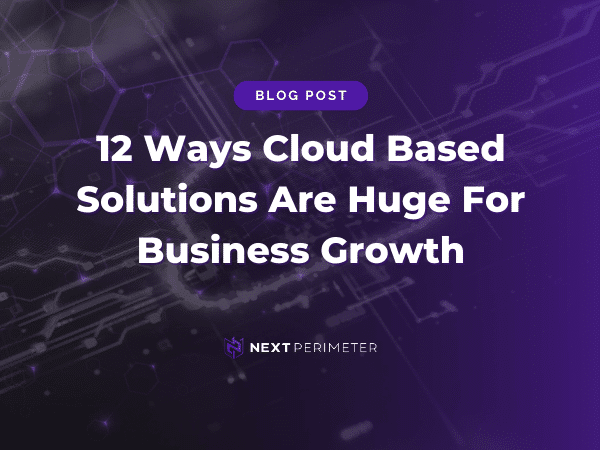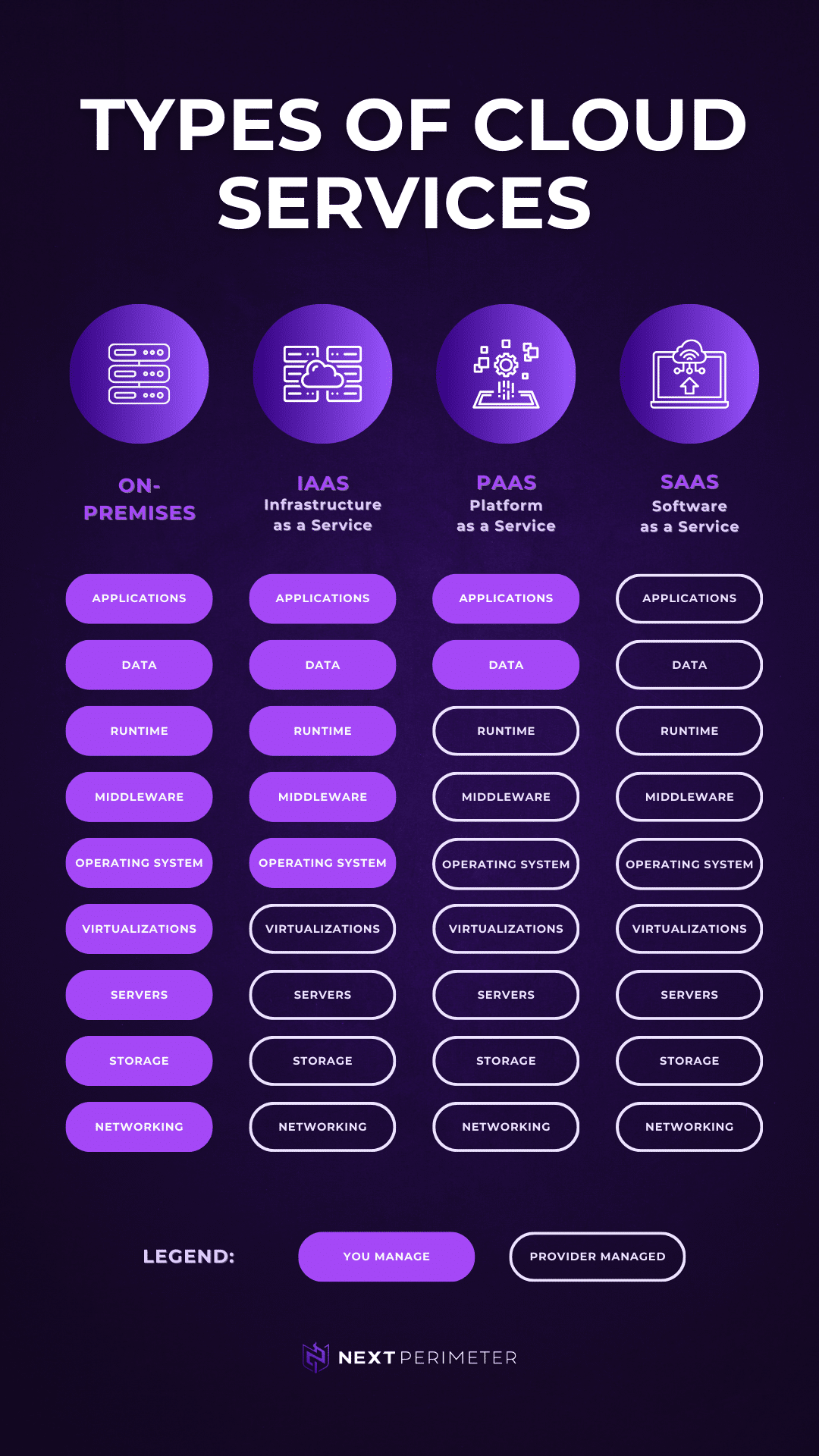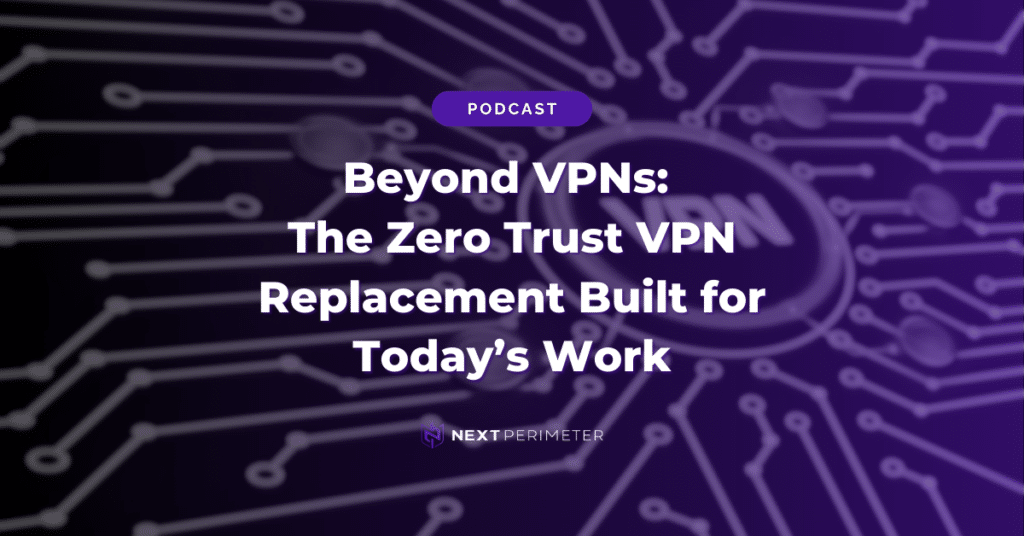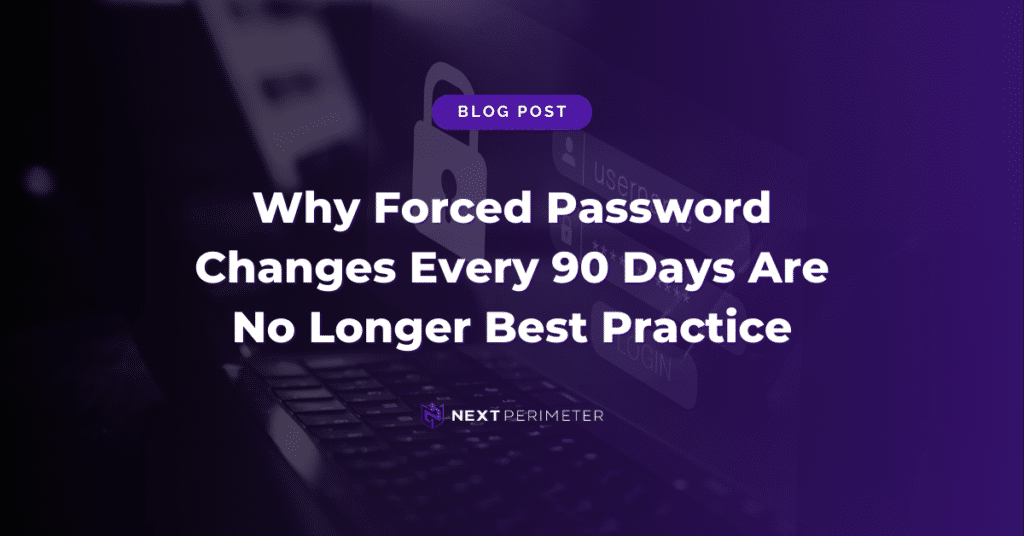Businesses That Leverage Cloud Based Solutions Experience 19.63% Growth Over Non-Cloud Competitors.
While motivations vary, businesses are harnessing cloud services to accelerate business growth and increase competitiveness. That includes all sizes, industries, and regions.
According to Flexera’s 2020 State of Tech Spend Report, cloud spend has surpassed on-premise software spend. 22 percent of cloud spend is going towards on-premise software and 25 percent allocated for cloud solutions.
Businesses are expected to increase cloud workloads by 21 percent in 2020. In January 2019’s “State of Cloud Report,” 94 percent of businesses surveyed reported using the cloud. 91 percent said they adopted public cloud solutions and 72 percent utilize private cloud services.
Why?
In a study by the market research company Vanson Bourne, “The Business Impact of the Cloud,” Bourne found that companies who adopted cloud services experienced a 20.66% average improvement in time to market.
Those companies also saw a 18.80% average increase in process efficiency, and a 15.07% reduction in IT spending. Combined these benefits led to a 19.63% increase in company growth.
Before diving into the advantages of leveraging cloud solutions, let’s review the different types of cloud services available.
Types of Cloud Based Solutions
Table of Contents
Cloud computing is typically categorized in two ways, either based on the deployment model or on the ‘as-a-service’ type.
There are three main types of cloud segments based on deployment: public, private, and hybrid clouds.
You might be more familiar with the service type categories such as Software-as-a-service (SaaS), Platform-as-a-Service (PaaS), or Infrastructure-as-a-service (IaaS).
Let’s take a look a closer look at each.
Software-as-a-Service (SaaS)
SaaS is software that’s made available via a third-party over the internet. Common examples include Google Apps, Salesforce.com, HubSpot, MailChimp, DocuSign, Slack, Drift, and ActiveCampaign.
SaaS offers ready-to-use, out-of-the-box solutions that meet specific business needs. Many SaaS platforms target customer relationship management, marketing automation or agreement management.
Most subscriptions include maintenance, compliance, and security services, which can be time-consuming and costly when using on-premise software.
Key Benefits of SaaS Services:
SaaS is a cost-effective alternative to the traditional IT deployment. They abstract the need to buy or build your own IT infrastructures, install the software yourself, configure the applications and employ an IT department to maintain it all.
User-friendly – SaaS providers’ survival largely depends on the application’s user-experience. Hence why these services spend massive amounts to provide users with great training resources during onboarding, making significant investments to optimize the user experience.
Virtually anyone can successfully use these applications with little technical know-how.
99% Uptime and Strong SLAs – SaaS providers have stringent Service Level Agreements that guarantee their services will virtually always be online, ranging from 99.99% to 99.9999%.
To put this in perspective, 99.99% uptime equates to 4 minutes 19 seconds downtime per month or 52 minutes and 35 seconds over year. 99.9999% means you might expect a total downtime of 31 seconds over an entire year.
Predictable pricing enables your finance team to forecast cost and budget accordingly, without unexpected fees.
Not surprisingly with these benefits, companies on average use 16 SaaS apps in everyday operations.
Platform-as-a-Service (PaaS)
PaaS is hardware and software that offers a complete development and deployment environment in the cloud. The resources within enable you to deliver everything from simple cloud-based apps to sophisticated, cloud-enabled enterprise applications.
You purchase the resources you need from a cloud service provider on a pay-as-you-go basis, then access them over a secure internet connection.
Common examples of PaaS include Microsoft Azure, Google App Engine, AWS Elastic Beanstalk, SAP Cloud Platform, Salesforce Lightning Platform (formerly Salesforce App Cloud), and Zoho Creator.
Key Benefits of PaaS Services:
Simple, cost-effective development and deployment – Develop and deploy apps without having to worry about operating systems, software updates, storage, or infrastructure. Developers are able to concentrate on building the next market-disrupting application without a full-stack in-house IT team required to support the infrastructure.
Scalable – These services are built on virtualization technology so they can scale up or down and more processing power or resources as needed.
Ease of use – A growing trend of cloud services is incorporating low-code and no-code features to their services. This makes it easier than ever for non-developers to create applications that accelerate business growth
Remote Access & High availability – PaaS solutions allow developers to work from anywhere that a reliable internet connection is available. Because mission-critical applications run off these services, PaaS providers have implemented fail-safe redundancies with strict uptime guarantees ranging from 99.99% – 99.9999% or greater.
When building apps, businesses used to need server space, software for programming environments, and security to ensure the safety of everything they kept on-premises.
PaaS allows companies to be very agile and responsive to issues or demands.
Businesses can scale quickly and avoid costly infrastructure investment. It’s for these reasons that the total PaaS market revenue was forecast to reach $20 billion in 2019 and to exceed $34 billion in 2022, according to the latest forecast from Gartner.
Infrastructure-as-a-Service (IaaS)
As the name suggests, IaaS provides computing infrastructure.
This includes physical or virtual machines, as well as other resources like content delivery networks, monitoring, firewalls, storage, backup and recovery, databases, identity and access management, integration, block and file-based storage, IP addresses and more.
If you host your website with a service provider like WP Engine, GoDaddy or Dreamhost, then your business has adopted Infrastructure-as-a-service.
Key Benefits of IaaS Services:
Infrastructure as a service circumvents the need for businesses to make significant upfront investments. This abstracts the setup and managing an onsite data-center or purchasing additional servers to support business objectives.
IaaS is an economical option for startups, scaling organizations, and businesses looking to test new ideas before making significant investments.
Since the IaaS model means the infrastructure is managed by the service provider, your team can focus on core objectives to grow your business instead of spending resources to manage and maintain the IT infrastructure.
Achieving high availability, business continuity, and disaster recovery are expensive since it requires a significant amount of technology and staff.
However, your team can leverage economies of scale and specialists to protect your business at a fraction of the cost required if your team were to build a business continuity solution in-house. This is done by working with a managed service provider who specializes in business continuity, disaster recovery, and is a certified Cloud Service Provider.
Best of all, with bulletproof a Service Level Agreement (SLA) that guarantees your critical data is secure and ready when you need it.
With a Backup and Disaster Recovery plan from Next Perimeter, your team can be operational with an identical copy of your server or systems within 15 minutes, not hours or days.
Cloud Service Providers (CSPs) specialize in cost-optimization, cybersecurity, and compliance. CSPs also boast sophisticated security systems, resources, and personnel that the typical small or midsized business does not have access to. They can also provide necessary cybersecurity training for employees.
A CSP can provide security for your applications, virtual servers, and data without investing six-figures to hire a cybersecurity specialist, cloud architect, and three technicians to monitor 24/7.
Cloud infrastructure is leagues ahead of on-premise performance. In a recent Cloud Adoption and Risk Report, 43 percent of companies using IaaS experienced faster time to market.
Compared to organizations that did not leverage IaaS services time to market, launching new products, and expanding to new markets were all 20-25% above average for companies using IaaS.
Types of Cloud by Deployment Model
Private Cloud
A private cloud consists of computing resources exclusively used by one business or organization.
A private cloud can be deployed from an organization’s on-site data center or server. It could also be hosted by a third-party service provider.
Unlike public clouds, private clouds are designed, configured, and maintained according to your company’s specific business needs.
Private clouds can offer greater security, governance, management, privacy, and compliance controls than a public cloud environment.
That being said, organizations can expect to pay a premium over public cloud services.
Advantages of Private Clouds
Greater Flexibility – Your business can customize virtually any component of a private cloud environment required to meet specific business needs.
Greater Security – A single-tenant environment means your organization does not share resources with others. Therefore more stringent access and security controls can be enforced.
Highly Scalable – Pay-as-you-go resource allocation allows your business to scale performance when needed, and downsize during seasonal dips to reduce operating expenses.
Public Cloud
By far the most common way businesses utilize cloud computing, public cloud infrastructure is owned and maintained by a third-party Cloud Service Provider (CSP) and delivered over the internet.
As mentioned above, 91% of companies already use at least one public cloud service.
Common examples include Microsoft Azure, Amazon Elastic Compute Cloud (EC2), Google AppEngine, Office 365 with OneDrive, Google Drive, Box.com, and Apple iCloud.
As the most popular model of cloud computing services, providers offer a vast array of solutions, resources, and services to address the growing needs of organizations. No matter your size, industry, or geography.
Be aware of what responsibilities you are still liable for when using a cloud provider that is not also an MSP.
Advantages of Public Clouds
Lower Costs – Your organization does not need to purchase any hardware or software. The subscription-based payment model affords predictable operating expenses.
Operational Agility without Maintenance – A service provider manages your public cloud infrastructure, allowing your internal IT team to focus on projects that will grow your business.
Public clouds offer organizations the ability to test implementations before making significant investments in hybrid or on-premise hardware.
Virtually-Unlimited Scalability – Public cloud service providers make on-demand resources available to meet your business needs.
Scale or add performance resources when needed. This reduces resource consumption during seasonal dips to reduce costs as desired.
High Reliability – Industry-leading service providers have data centers across the globe and built-in redundancies to protect your applications, data, and systems, thereby ensuring the highest availability possible.
Hybrid Cloud
Considered to be “the best of both worlds,” hybrid clouds combine the benefits of on-premise infrastructure (like a private cloud or application server) and public cloud services.
In a hybrid cloud environment, data and applications can move between private and public clouds. This provides greater flexibility, performance, and deployment options.
Some services like email and VoIP phone systems should not be hosted on-site in case of an unexpected business disaster, hardware failure or power outage.
Similarly, hosting large data sets off-premise in a public or private cloud environment can be extremely costly. It’s for these reasons that businesses need to strongly consider the balance between operational costs and identifiable fault tolerance a business is willing to tolerate.
For example, one of Next Perimeter’s critical high-performance servers is hosted on-premise because a comparable cloud server would cost approximately $3,500 per month.
By managing our server on-site, we are able to reduce operational expenses and recoup the full-price of the server within six months instead of paying $3,500 per month indefinitely.
The disadvantage here is if the server does go down, we might need to deal with a temporary outage.
However, the server’s uptime is between 99.9% – 99.95% which equates between a few hours to 8.77 hours of downtime over the course of a year for scheduled maintenance and service interruptions.
The server runs 10x faster, with virtually no latency across users. When we do take down the server for maintenance, we have complete control over the time, how the server is configured, which updates are made, and the interface therein.
Businesses often do not have this level of control with a cloud service provider.
Advantages of Hybrid Clouds
Cloud Cost Optimization – Hybrid cloud environments allow organizations to more effectively manage their cloud spend by transitioning resources from a public cloud to a private cloud when needed.
Increased Productivity with Significant Cost Savings – The productivity gains of having a server onsite offers greater cost savings with a measurable return on investment compared to hosting an applications server in the cloud.
Hardware and specifications designed specifically for your business does this by handling all your users simultaneously.
Control – Businesses are able to maintain a private infrastructure for sensitive data like intellectual property, customer data, and other sensitive assets.
Cloud Bursting and Flexibility – With a hybrid environment, organizations can take advantage of “cloud bursting,” a process by which an application or resource runs in an on-site private cloud.
The cloud runs until a threshold is met or spike in demand (think online shopping or tax filing season) initiates a “burst through.” This burst goes from the private cloud to a secure public cloud environment in order to tap into more computing resources.
This approach offers virtually unlimited scalability and significant cost savings.
Improved Security Posture – Sensitive IT workloads run on dedicated resources in private clouds (on-premise servers) while less-sensitive and regular workloads are spread across inexpensive public cloud environments.
This allows organizations to reduce capital investments for additional on-premise hardware.
12 Reasons Why You Need to Be Leveraging the Cloud to Accelerate Business Growth
87% of IT professionals across 1,000 organizations said they experience benefits from the cloud that drive business acceleration. (Cloud Adoption and Risk Report)
41% attribute business growth to use of the cloud and 30% are able to launch new products, speed up time to market, and expand to new markets. (Cloud Adoption and Risk Report)
1. Flexibility at Scale
Cloud services are highly scalable, and your team can increase or decrease resources as needed.
If you’re an eCommerce business, you may need to accommodate more traffic and users during the holiday season. Increasing costs will occur, but in the off-season, you need the ability to reduce performance resources thereby saving money.
With on-premise technology, your only option is to upgrade existing hardware or purchase a more powerful server.
Sure, you can always reduce the resources dedicated to a workload, but the manufacturer isn’t going to cut your team a check for it.
2. Improved Cybersecurity
McAfee found that the majority (52%) of companies experience better security in the cloud, according to their Cloud Adoption Risk Report. This is in stark contrast to the earlier stages of cloud adoption, when companies were apprehensive, filled with fear and doubt about cloud security.
Cloud service providers have the resources to protect their infrastructure and your data in ways that most small and midsized businesses cannot.
3. More Efficient Collaboration
Collaboration in the cloud and the ability to mingle across geographical or organizational borders is becoming an ever more critical foundation of business success.
With teams being able to work remotely through cloud computing solutions, teams can access, edit, download, upload, and share content at any time.
Virtually every cloud service allows real-time collaboration, which means colleagues can work together on the same content or project, iterating more efficiently to complete client deliverables faster.
As BYOD (Bring Your Own Device) and the remote/distributed workforce continue to grow year-over-year, employees need to be able to communicate easily between various devices.
4. Improved Employee Productivity
According to Microsoft’s study “Trend Report: Why Businesses are Moving to the Cloud”, 79 percent of businesses reported experiencing cost savings, increased employee productivity and/or improved security as a result of using a cloud approach.
Cloud technology helps increase productivity because employees are able to take their work with them and work when they feel most productive.
Many cloud-based software companies have phone apps that make it convenient to work on the go and never miss a client’s sales inquiry.
Most cloud applications have integrations available that allow you to automate routine tasks. They also allow you to receive notifications for sales inquiries, send automated emails for website interactions, update contact records, and extract data that can be utilized to find market trends.
5. Agility
According to Harvard Business Review’s cloud survey of 527 HBR readers in large and mid-sized companies across a wide range of industries, business agility leads the list of drivers for adopting cloud.
32 percent of respondents said it was their primary reason for pursuing cloud initiatives.
The cloud offers the ability for rapid provisioning of computing resources and scaling those resources to align with changing business needs.
Organizations can provision the computing resources they need when needed and then scale back when they are no longer required. That helps reduce costs as organizations don’t have to maintain and pay for resources that aren’t needed all the time.
The cloud’s agility also helps companies deploy new solutions and products more rapidly and with greater ease.
Businesses can quickly test ideas in the marketplace, gather feedback, analyze big data, and make necessary changes to meet customer demand.
6. Faster Time to Market
The cloud allows organizations to decrease the time it takes to provision IT infrastructure. This speeds up the delivery of IT projects that are critical to revenue growth or cost reduction.
While a physical server could take days or weeks to procure and provision, a cloud server takes minutes.
Faster time to market means faster time to revenue.
With real-time collaboration across content, DevOps, streamlined application development, and collaboration across virtually every facet of cloud computing.
Teams are able to work more efficiently while remaining strategically align which allows organizations to go-to-market faster.
7. Higher Employee Satisfaction
The reality is that when given the opportunity, most professionals would rather work from home or remote. There’s absolutely nothing wrong with that considering Owl Lab’s 2019 State of Remote Work Report study found remote workers say they’re happy in their jobs 29% more than on-site workers.
Remote workers reported having better work-life balance, focus, and less stress.
Companies that give workers more flexibility are more likely to retain them.
Additionally, the myth that remote workers are less has been consistently disproven. In the same study, telecommuters reported working more than 40 hours per week 43% more than on-site workers.
Working remotely makes such a difference to employee satisfaction that 34% of U.S. workers surveyed would take a 5% pay cut if they didn’t have to work on-site.
As businesses across public and private sectors recognize the benefits of adopting more flexible work policies, cloud computing will continue to play a central role in enabling employees to stay connected and productive from anywhere.
8. Ability to Launch New Products
The traditional software development cycle has been thought of as long and time-consuming. Here the product must go back and forth amongst development, QA, and deployment or operations teams before it is finally ready for release.
The cloud makes the software development cycle more efficient. Developers can simply focus on building, testing and deploying the application instead of worrying about infrastructure demands or maintenance.
The cloud not only benefits software development companies, but technology is also transforming the global manufacturing economy. Manufacturing is digitizing virtually every facet of modern manufacturing processes – called “smart manufacturing.”
In fact, the Information Technology & Innovation Foundation reports that digital services such as cloud computing now account for at least 25 percent of the total inputs of finished manufactured products.
Cloud-based computing, alongside other foundational technologies such as next-generation wireless, advanced sensors, and high-performance computing.
Computer-aided design, engineering, and manufacturing (CAD/CAE/CAM) software also represents an essential component of the smart manufacturing revolution.
9. Expansion to New Markets
Imagine you own a business in Los Angeles and you want to enter the Miami market.
In the past, your organization would need to rent an office space, hire employees, and buy an on-premise server. Next, you would need to hire a consultant or Managed Service Provider (MSP) to set up the infrastructure of your network, wireless, and firewall.
Then there’s setting up communications, buying phone hardware, work furniture, the possibility of cosmetic building updates, and a host of other miscellaneous costs that quickly add up.
Today, a business can set up a virtual office in another area for less than $100 per month, hire a few remote workers, provide training, and hit the ground running using their existing cloud infrastructure. You could mail the employees a work laptop and business phone if required.
No matter how you slice it, this approach would save your business from investing 10s of thousands of dollars. That’s hard-earned money that could be invested in marketing, sales, and strategic initiatives to help you gain a foothold in that new market.
10. Cloud Solutions are Environmentally-Friendly
Socially responsible organizations recognize the benefits of adopting cloud services as a more environmentally friendly practice compared to investing in on-site servers.
Cloud data centers take up less space and infrastructure than their on-site server counterparts.
With fewer data centers worldwide and more efficient operations, adopting cloud solutions means that less hardware needs to be manufactured, heated, and cooled. Less hardware gets discarded or needs to be recycled.
Many companies like Google are driving the “green cloud” movement by investing in 100% renewable energy to offset their customers’ digit footprint with clean energy, which reduces technology’s impact on the environment.
11. Rapid Updates and Fresh Releases
SaaS companies are frequently updating and releasing new versions of their applications.
These software enhancements typically offer immediate upgrades to existing features, as well as, releasing new features and functions that empower your workers to be more productive.
In contrast, proprietary in-house built or purchased software might release enhancements once, twice or on a quarterly basis (best case scenario).
12. Better Disaster Recovery
94% of companies suffering from a catastrophic data loss do not survive – 43% never reopen and 51% close within two years. (University of Texas)
It’s a no brainer for smart executives operating in today’s digital age – every business needs an active data backup and disaster recovery strategy to protect their most valuable assets.
Whether you experience a natural disaster, power failure or other crisis, having your data stored in the cloud ensures it is backed up and protected in a secure and safe location.
The cloud enables small businesses and startups to avoid the high cost of setting up an on-premise disaster recovery solution.
Final Thoughts
In spite of these advantages, the Cloud Security Alliance has identified a number of obstacles preventing cloud adoption.
First and foremost, security remains a top concern with 73% of organizations reporting that doubts about security are holding back cloud projects.
Regulatory compliance and loss of control over IT services tied with 38% of companies reporting these factors are stalling cloud projects.
Emerging technologies require specialized knowledge and experience. 34% of companies reported that knowledge and experience of both IT and business managers is a barrier to cloud initiatives.
Businesses are looking to resolve their security and compliance worries by extending the organization’s policies to data in the cloud. By doing that and investing in the major cloud skills gap, more companies will be able to take advantage of significant benefits that cloud computing services can offer.
The benefits of using the cloud are apparent to us at Next Perimeter. Our trained technicians are experienced and ready to help you identify the best solutions for your business and which type of cloud deployment makes the most sense.
To learn more, call us today at 888-286-4816.





